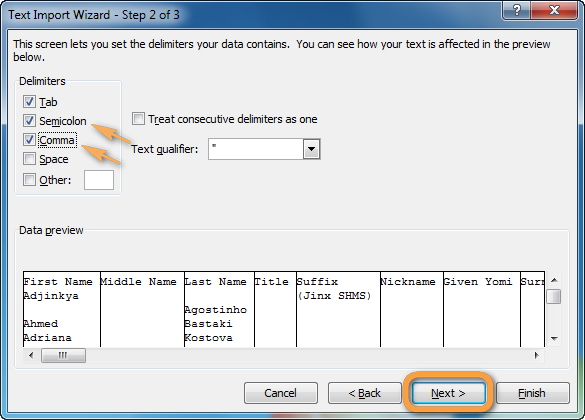
You can convert an Excel worksheet to a text file by using the Save As command. For more information, see Convert numbers stored as text to numbers and Convert dates stored as text to dates. If Excel doesn't convert a particular column of data to the format that you want, then you can convert the data after you import it. Select Transform Data if you want to load the data to Power Query, and edit it before bringing it to Excel. You also have the choice of adding your data to the Data Model. Select Load if you want to load the data directly to a new worksheet.Īlternatively, select Load to if you want to load the data to a table, PivotTable/PivotChart, an existing/new Excel worksheet, or simply create a connection. In the preview dialog box, you have several options: In the Import Data dialog box, locate and double-click the text file that you want to import, and click Import. On the Data tab, in the Get & Transform Data group, click From Text/CSV. You can import data from a text file into an existing worksheet. (After you configure the flat file, the next page is then Select Source Tables and Views.) For more info, see Configure Flat File Destination.Import a text file by connecting to it (Power Query) On this page, you specify formatting options for the destination flat file. If your destination is a flat file, the next page is Configure Flat File Destination. For more info, see Select Source Tables and Views. On this page, you review the query that you provided and optionally choose columns to copy and preview sample data. SELECT * FROM Īfter you write and test the SQL query that selects the data to copy, the next page depends on the destination for your data.įor most destinations the next page is Select Source Tables and Views. To specify a range of cells that you haven't named, append the $ character to the end of the sheet name, add the range specification, and add delimiters around the string - for example. To query a named range, simply use the range name - for example, MyDataRange. To query a worksheet, append the $ character to the end of the sheet name and add delimiters around the string - for example. There are three types of Excel objects that you can query.
EXCEL TEXT IMPORT WIZARD EXPANDING PREVIEW HOW TO
If your data source is Excel, see Provide a source query for Excel later in this topic to learn how to specify Excel worksheets and ranges in a query.Ĭheck the syntax of the SQL statement that you entered in the SQL statement text box.įor detailed info about connecting to Excel files, and about limitations and known issues for loading data from or to Excel files, see Load data from or to Excel with SQL Server Integration Services (SSIS).

SELECT SalesPersonID, SalesQuota, SalesYTDįor more examples of SELECT queries, see SELECT Examples (Transact-SQL) or search online. You can also paste the text of a saved query, or load the query from a file by clicking Browse.įor example, the following query retrieves the SalesPersonID, SalesQuota, and SalesYTD from the AdventureWorks sample database for sales persons whose commission percentage is more than 1.5 percent. Type a SELECT query to retrieve specific rows and columns of data from the source database.


 0 kommentar(er)
0 kommentar(er)
